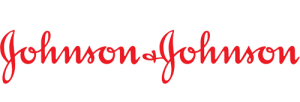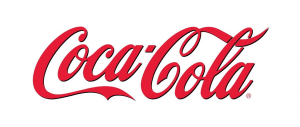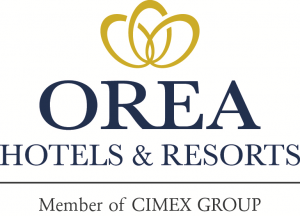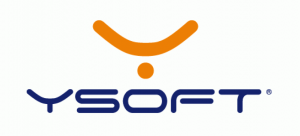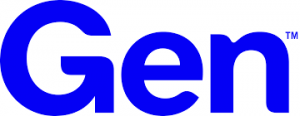Interview with Pavel Kysilka, CEO of Česká sp
2012-10-30
Pavel Kysilka is one of the most revered names in Czech finance. His name is associated with some of the most momentous changes in the life of this country. In 1992, he led the introduction of the Czech koruna from his seat on the CNB’s board of governors. And after Česká spořitelna was switched into private hands, he headed the banks’ successful effort to raise its customer service from the bottom to the top of customer satisfaction rankings. Now, as CEO and Chairman of the bank, he is guiding the bank as it navigates the constant changes resulting from the crisis. In this interview, Mr. Kysilka talks about the management challenges of revolutionary and evolutionary change, how his bank has approached innovation, and how the crisis has impacted the market.
On managing revolutionary and evolutionary change…
“Change is the constant in a business. What is dependent on management is the degree of that change, and how effectively that change is translated into success. At Ceska Sporitelna we had a period of revolutionary change that we then needed to modulate into evolutionary change.
Big change, or revolutionary change, obviously starts at the top. When Erste came into Sporitelna, the first step was to conduct a review of the top executives, both within Sporitelna and at the branch office of Erste that would be merged into the operation. At the conclusion of this process, almost everybody had a new role in the organization.
I was one of the executive team responsible for overseeing this change. I was in charge of the introduction of the new service quality management model. We started with profound customer research, the first such research that had been conducted in more than a decade. After several months of this research, we could describe and define the segmented voice of our customers. According to these segments, we set our internal standards for service quality. These standards had to be kept by everyone in the organization, particularly the people in the front offices.
That led logically to the next step, which was to train the 7000 people in those offices. We introduced two new measurements for service quality. The first was based on a customer satisfaction index that measured by customer segment how our service met the demands and expectations of our clients. This index was achieved by a computer-aided telephone interview with 170,000 clients. The second measurement was based on mystery shopping in branches.
We linked bonuses in the branches not only to sales but also to performance as defined by these two measurements. This pushed us from the last in customer service to the top group in the banking sector. This jump was one of the greatest successes of the transformation process, and It helped to make other parts of the transformation possible.
The transformation moved directly from the top executives to the front offices, bypassing the middle management. This was a necessary step because we had an urgent need to perform well. It also helped with the transformation, because many transformations get trapped in the middle territory of organizations. This territory tends to value that which has been tried and proved to be true.
On moving up the innovation ladder…
We knew the priorities and expectations of the customers here, but at the same time we wanted to raise our standards to those of the best North American and European banks. That was our benchmark. So we were comparing ourselves not just with our competitors here in the market, but with the best practices of the best banks in the world.
We recognized where we were in the innovation cycle. At that time, we understood that we were not in a position to surprise the market with something completely new. We operated in a cut-and-paste mode by taking the best ideas from other banks and other markets and applying them to this market. As we have developed, and as the market has developed, this thinking has changed. We now have the ambition to be the leader in innovation in the most relevant areas of our operations.
But then it was a time when the expectations of clients were rapidly changing, and the customers were being pampered not only by other banks, but by the introduction of many high quality organizations across the whole retail sector. It created entirely new conditions for the market, which created enormous external incentives for us to change. We had to react; there was not much space to act.
Many aspects of the change were difficult. The IT. The size and scope of the projects. As always, however, the biggest obstacle during the transformation was the minds of our people. We realized that if we wanted to gain marketshare, we needed to achieve mindshare first.
To do this, we used every possible form of communication and motivation to explain our goals and to persuade people to adopt them as their goals as well. We wanted people to feel proud of the organization, and to feel proud of what they had accomplished through the organization. As I said earlier, our tactic was not to lose time, and to go directly to those people who could create the visible change for the customer. We needed them to feel motivated to change, and to have that motivation aligned as closely as possible with how we wanted the organization to change. Then we could use the positive reaction of the customer to our transformation to create even more motivation to change.
On the transition from extraordinary change back to normal change…
This revolutionary transformation took about three years. Then we faced another challenge: how to modulate the change in the organization from revolutionary to evolutionary without losing the sense of urgency or motivation.
When we were going through this dramatic transformation, it had a corresponding impact on the motivation of our customers, our customers, and also the people who potentially could work for us. They could see the big changes. It was similar to a greenfield project where an entire new structure is built where there once was nothing. So it was relatively easy to keep everyone excited and driven.
So how to keep up this level of energy and discipline when the changes are less disruptive, and more gradual. This is tricky. First, people must understand the passion necessary for executing their jobs at a high level daily, and how important that high level of execution is to the performance of the organization, and how important the high level of performance is to our clients and the national economy.
Also, in great transformations, the focus is often on the competition between what you used to be and what you want to become. In evolutionary change, the focus changes a bit to a wary monitoring of your competition and making sure you stay a step in front of them. As the leaders of an organization, you have to ensure that you keep some focus on this concept of constant improvement from what you are to what you can be, because self-improvement creates more lasting satisfaction and motivation.
You can, of course, combine the two by trying not just to match global best practices, but to be the one to introduce them. We are at a stage in our development in which we can realistically try to be the leaders. This establishes an environment for experimentation, which can lead to major innovation.
To do this well, we have to anticipate trends, not just identify them. We view this as a major responsibility of management within the organization. We don’t just want to know where we are today, but where we must be tomorrow. For this reason, we try systematically to put people with different experiences and expertise together; for instance, we want our business people to talk to our technology people, and our financial services people to talk to people completely outside the organization who understand what is going on within the society.
The first ideas are brainstormed within the board minus one. That is roughly 25 people within organization. The people should withdraw from our business for a few days to ponder and discuss changes going on within our industry and within our society. Once a year, we have a profound discussion on our strategy, which often leads to an amendment to our strategy and then transmitted of these changes into our performance management. Then four times a year we have performance management talks with our people and we review
We always start with the voice of the customer. I do not want to have an organization led by the board.: I want to have an organization led by the customers. We invest very much into customer research. At the same time, we also hold focus groups with the customer, and we invite some very important clients to our management meetings before we begin our review and brainstorming on the strategy. So we try, in a very systematic way, to bring the voice of our customer directly into the operation of our business lines.
Our clients determine which experiments we will pursue, and which we will continue develop. We are not trying to force anything from the top down and out into the market. When we have an idea, we test it in focus groups and try to get as much quantitative data on how the customer will respond to it. Then, after we have rolled out the pilot, we present the results of our new product on the table, without logos, along with those of similar products of our competitors, and we let our customers judge whether it is good or not. Based on their response, we decide whether we will go ahead with implementation, or whether we should focus in other areas.
On the crisis…
Society is changing. The crisis impacted it severely. The post-traumatic stress is high. Customers and corporates are very cautious. They need to have high levels of trust in the partnership between themselves and you, and they demand more than before that they get a great value for their money. More and more, they want solutions that are tailored through their particular need at a particular stage in a particular situation, and they are more interested in keeping a relationship throughout their entire lifetime. It is no longer about selling a product, but about selling a solution. This means we have to switch from the language of finance into the language of the daily life of our customers. Our people have to retain their detailed knowledge of the product, but now they have to be even better at understanding how to put together a package of those products that best resolve a particular need of the client. It is very individual; it will require more sophisticated IT; and it will take more psychological understanding.
This is especially challenging because the segments of society are diverging. Surprisingly, the division is not along the traditional age categories, but along archetypal categories. We differentiate people by their values, how complex their lives are, what motivates them, essentially by how they think and how they behave. We have created several archetypes; we now have mapped the country and know the percentage of each archetype; we have a good understanding of their approach to savings, to their families, to their friends, and to their work. So we now have a good deal of relevant detail to shape our products around how they can best serve those archetypes. We believe this is our crucial advantage in developing tailor-made services.
The days of uniform delivery of uniform services are over. Clients now all require a unique experience when it comes to value propositions, service communication, the mix of delivery channels, and pricing. This differentiation needs to be backed by certain synergies, such as the IT systems, but we are moving into an era of increasing segmentation. The key for us will be staying in step with this segmentation, understanding how it affects our products, and continuously altering them so that they provide exactly the solution that fits our individual client’s need. That is why the question for companies today is not whether they need change management, but what degree of change they need to manage.”


